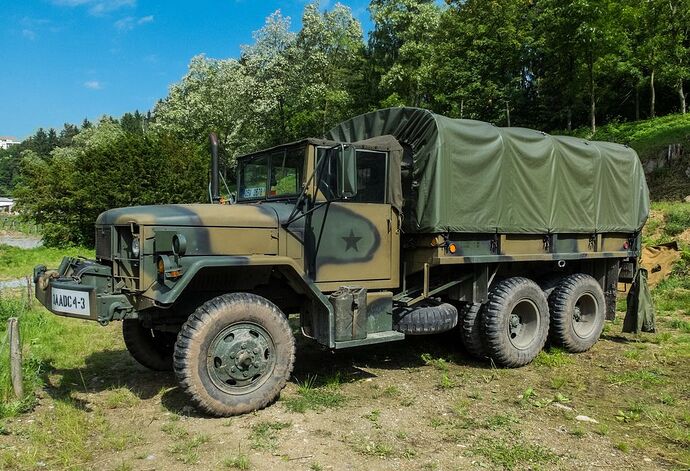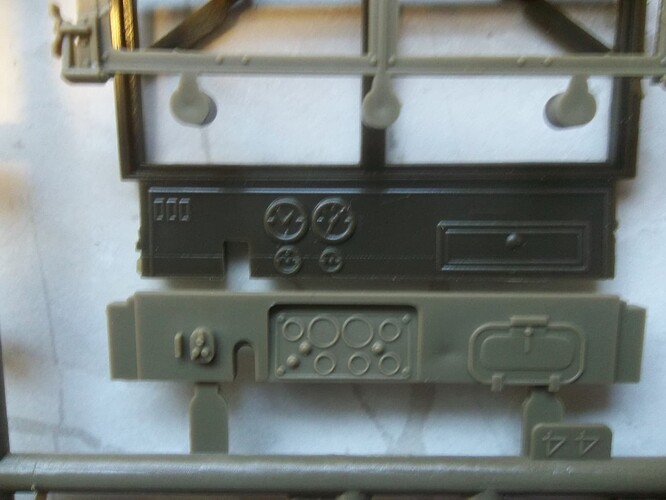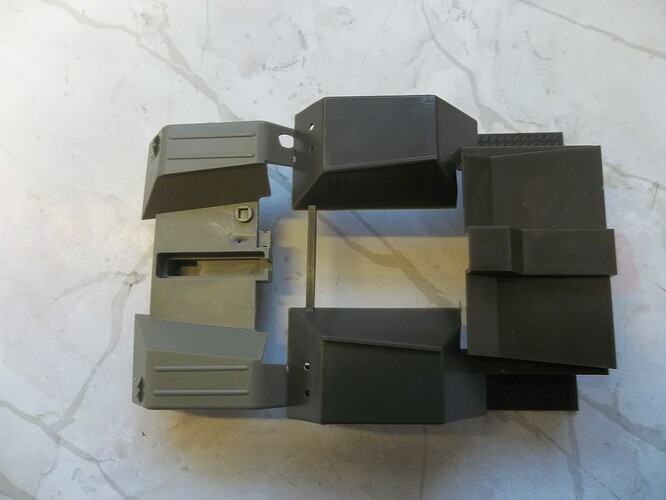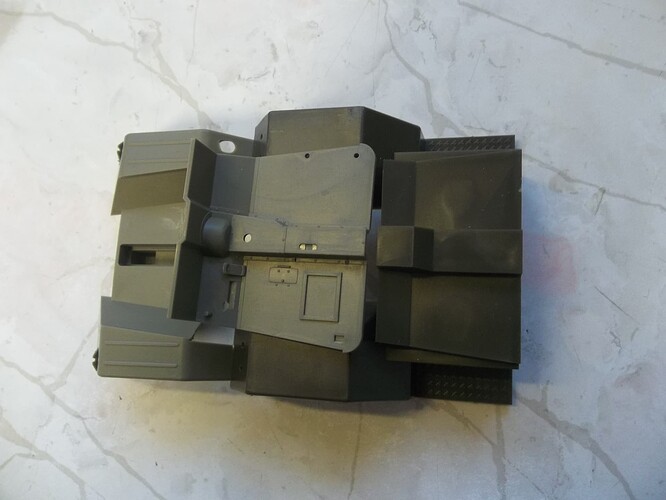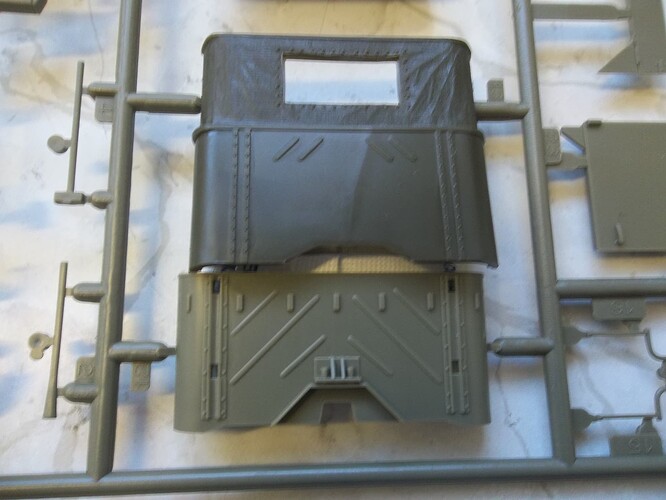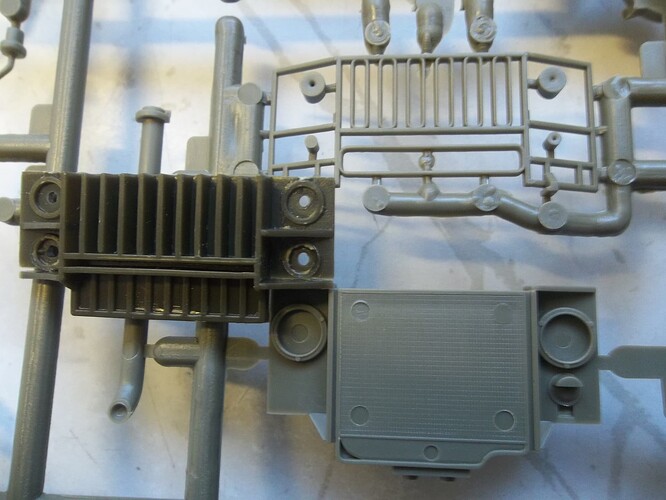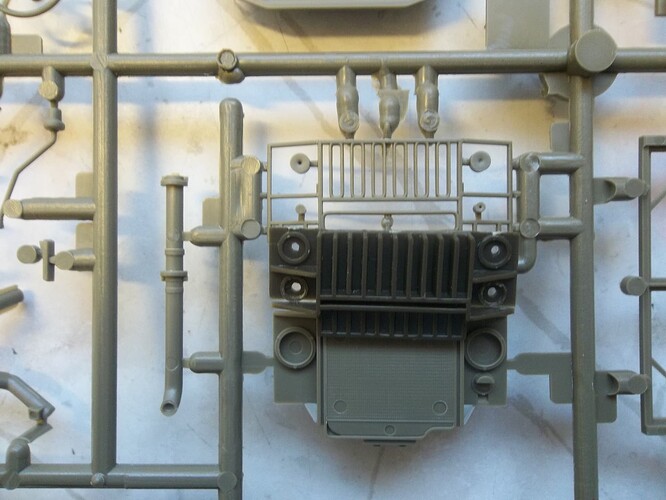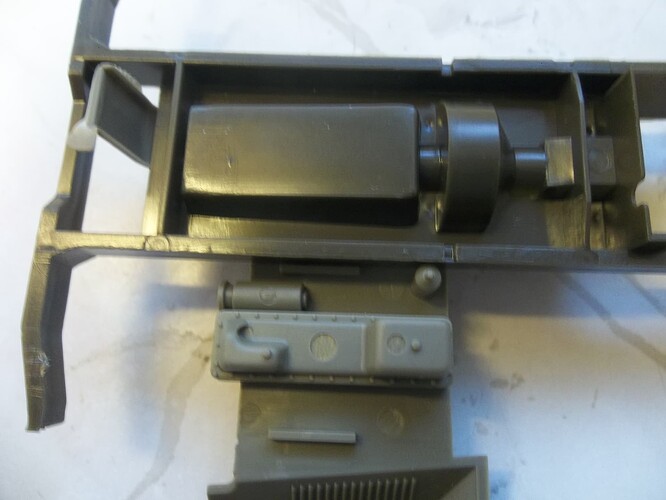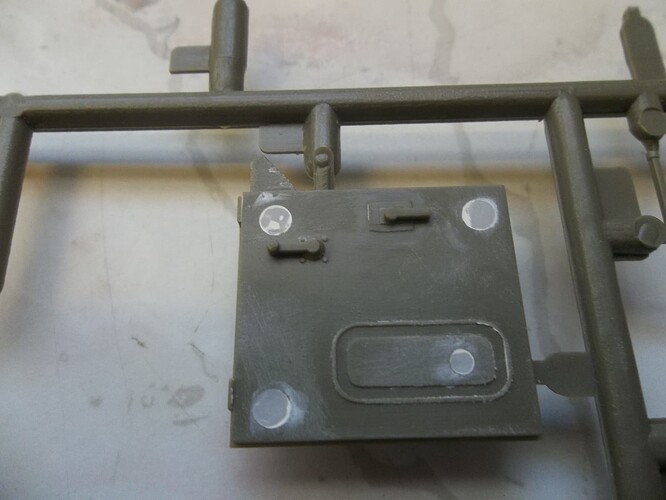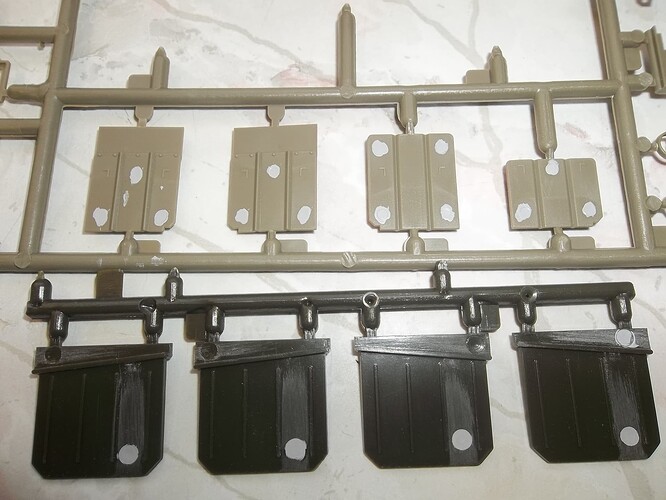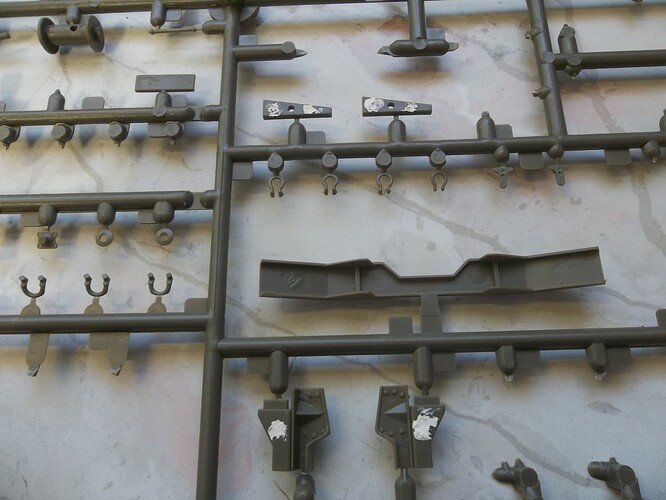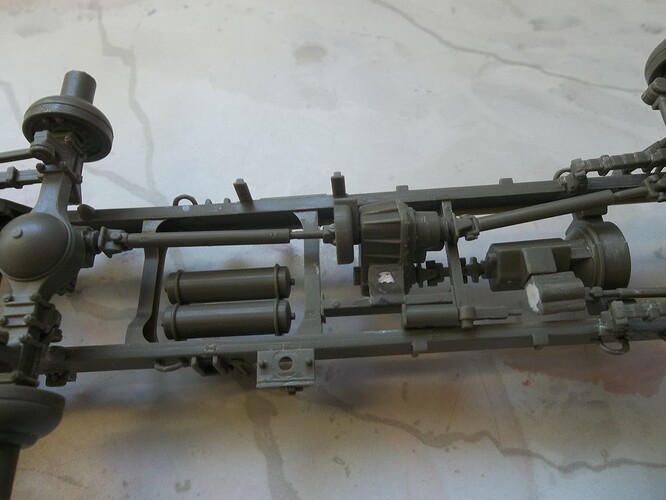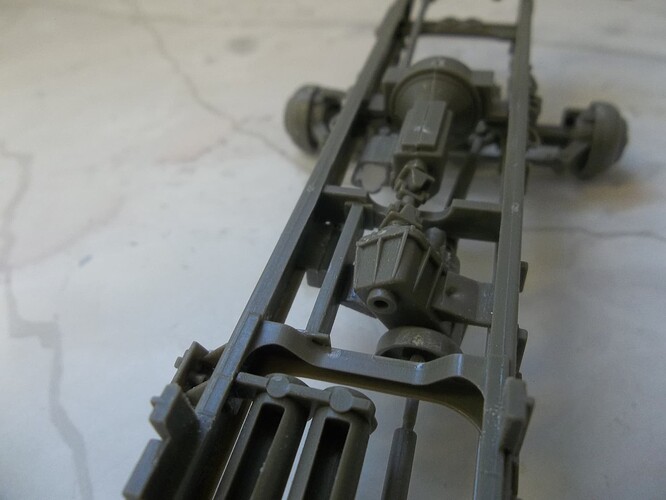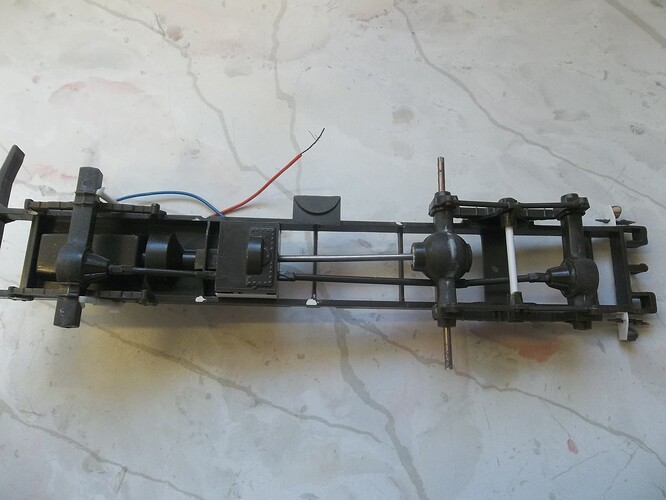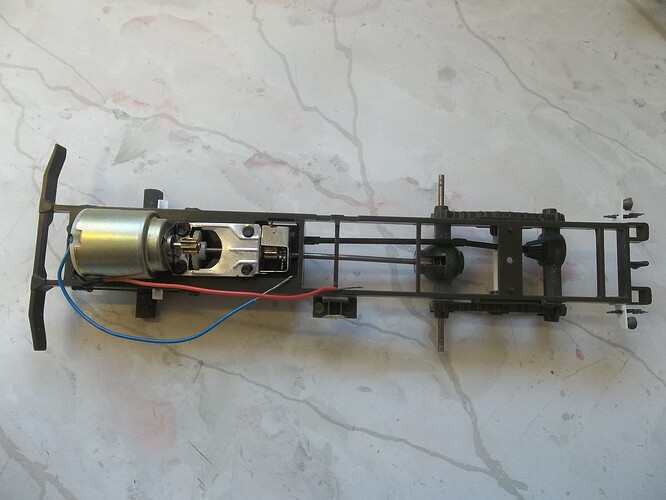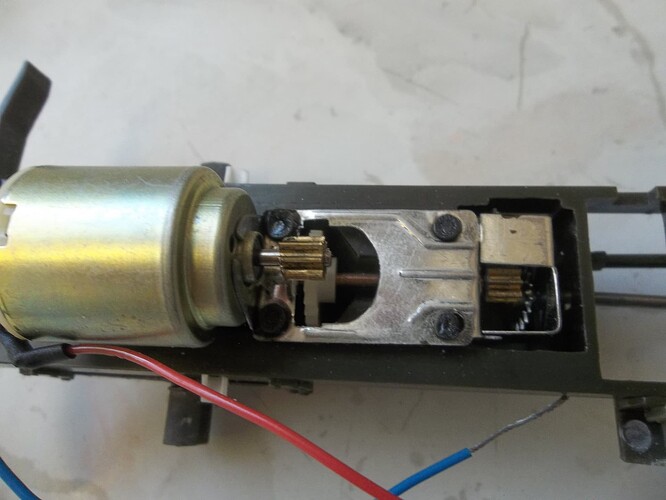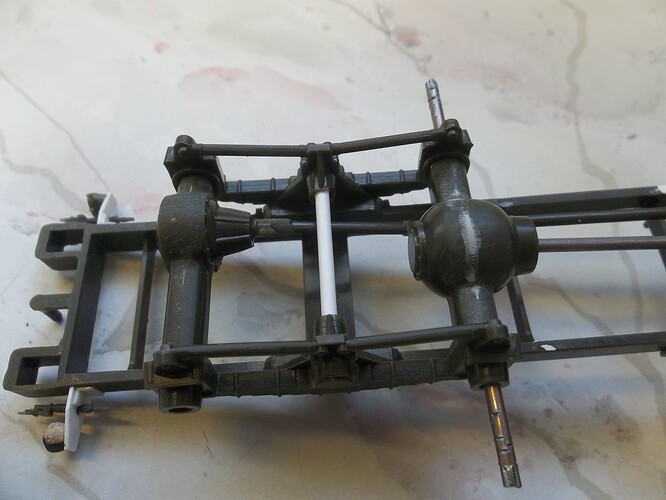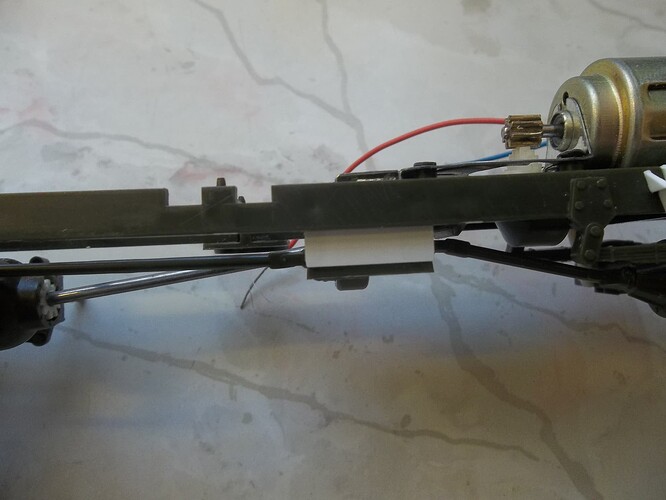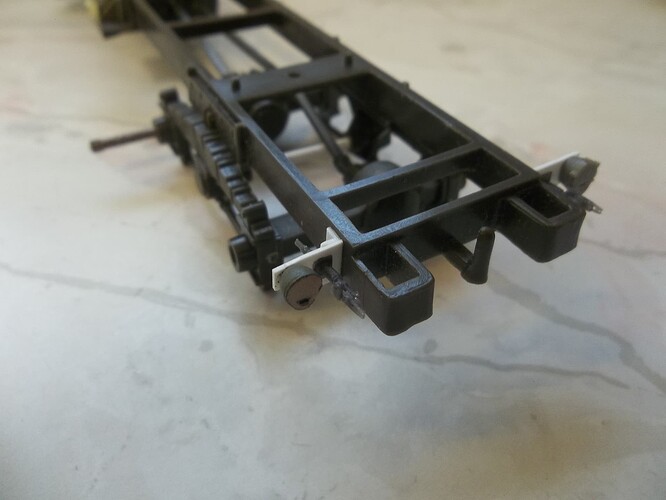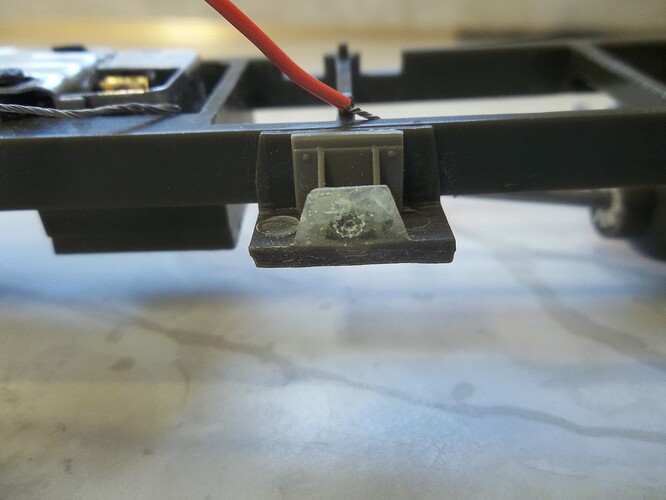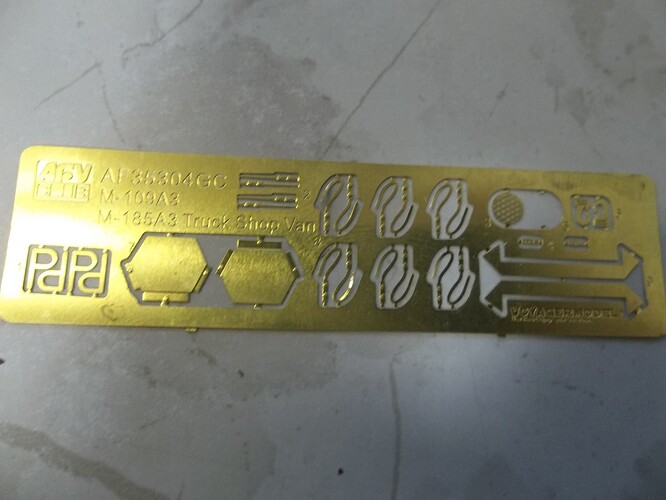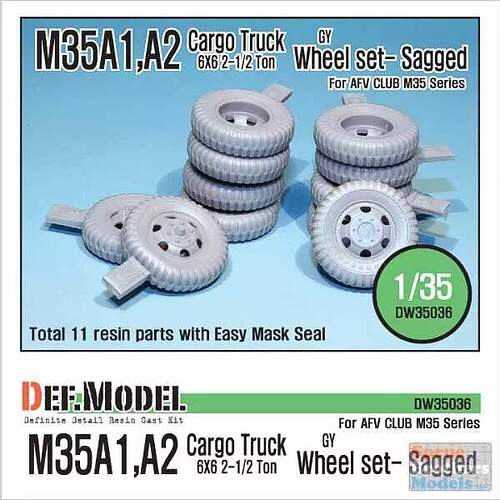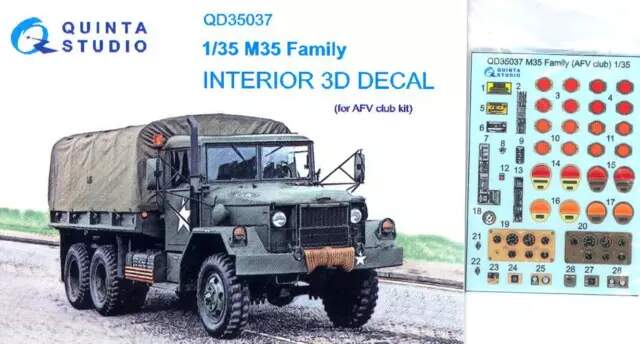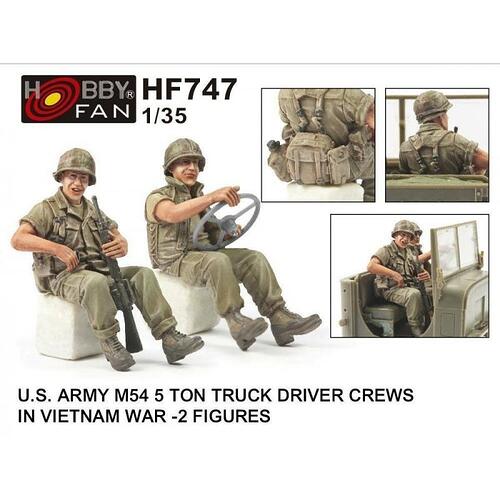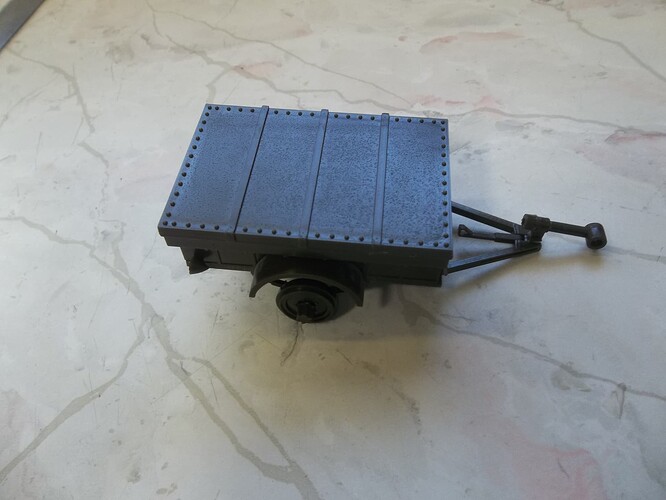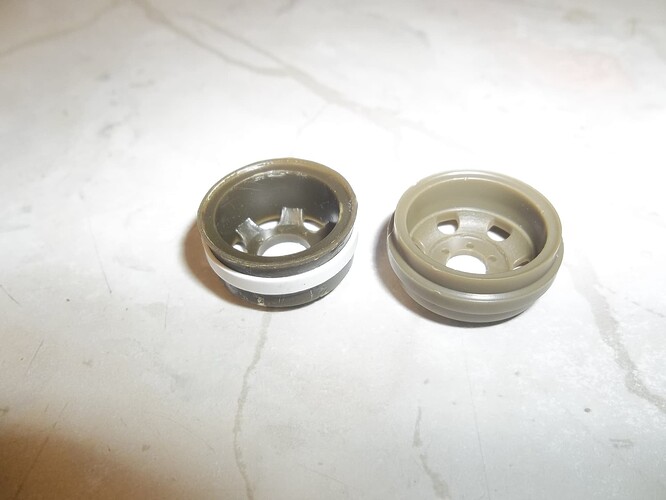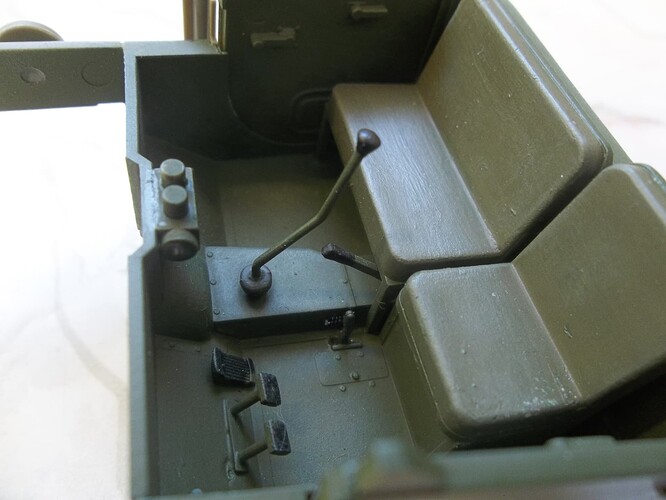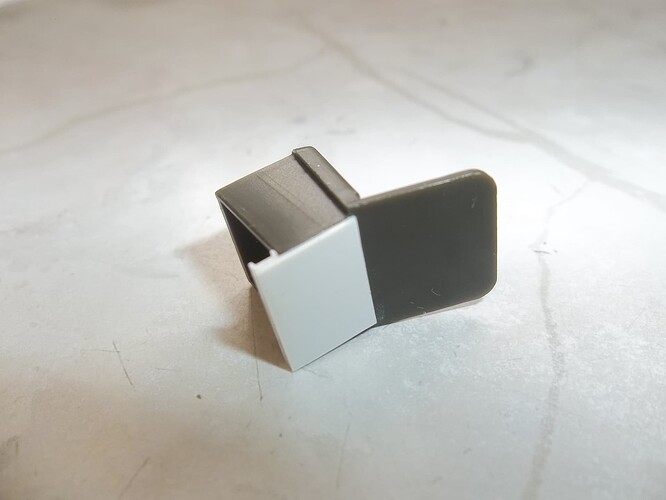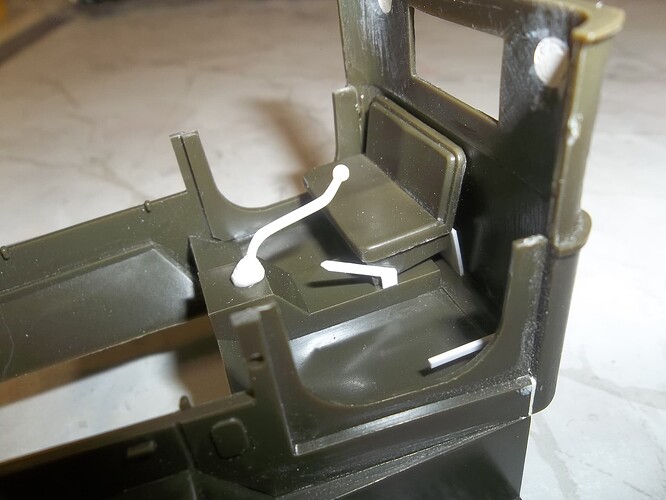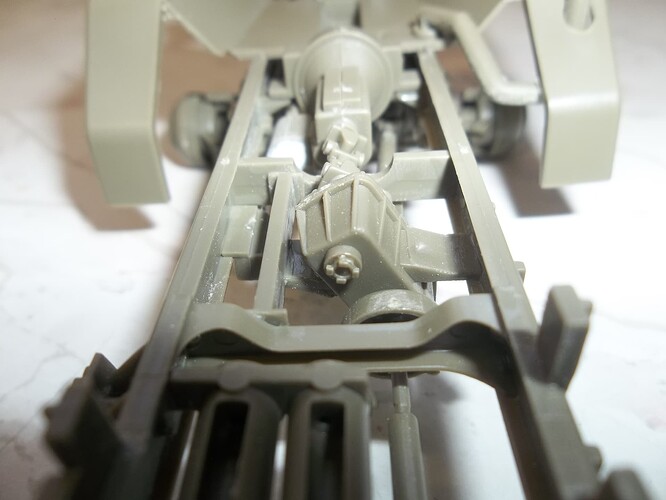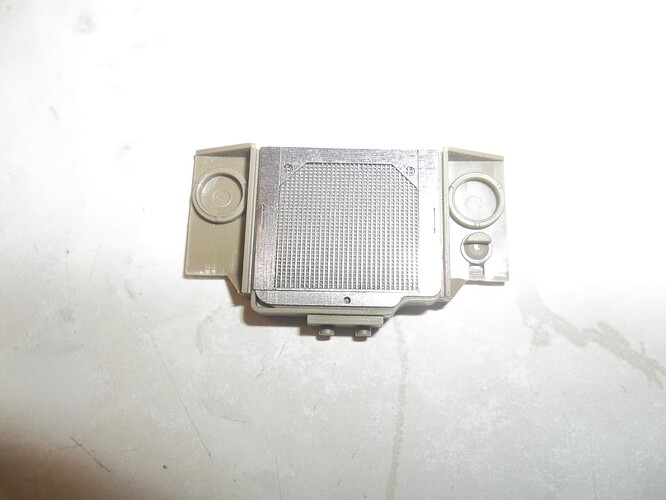Yes, I am actually building a wheelie-thingy. Two of them. But, keeping with my pattern of doing wierd stuff, I am building the AFV Cub M109 Shop Van and the old Bandai 1/30 Diamond M36 truck.
Both of these kits have their issues for me to deal with, but should come out well in the end.
First off, the Bandai M36. It’s not 1/30 scale, and it’s not an M36. From my research, the M36 is a long bed, long wheelbase vehicle, with the bed sides divided up into 6 segments:

The Bandai kit is a standard bed/wheelbase cargo truck with the bed sides divided into 4 sections, in other words an M35 truck like this:
So Bandai got the model of this truck totally wrong. This indicates that their research was off. This is something of a disappointment, as I wanted to build an M36. Switch to plan B, build an M35 cargo truck.
It is not 1/30 scale. Not even close. Again, their research was totally off. After measuring the kit parts; and comparing them to the stated dimensions of the real truck, as well as the AFV kit, it appears to be roughly 1/35 scale-ish. Maybe. The scale length of the frame is only slight off from the real truck, and almost exactly the same as the frame of the AFV kit. But the size and dimensions of various parts and assemblies are all over the place. Test fitting the cab assemblies I found that I could, if I wanted too, swap cabs as both would fit onto either frame with very little work. But the various parts are not interchangeable. The instrument panels are different, but basically the same size. but the door openings for the Bandai are bigger and a different shape that the AFV. On the other hand, the seats in the Bandai are smaller than the AFV. The front fenders of the Bandai are bigger.
The rear wall of the cabs are nearly the same:
But the front grill of the Bandai is slightly wider and shorter than the AFV:
The wheels are the same diameter, but the tires are different:
In this photo, AFV is on the left, Bandai on the right, and DEF on top for comparison.
I could go on, but you get the idea. So I am calling it 1/35 ish and building them together.
Ken

